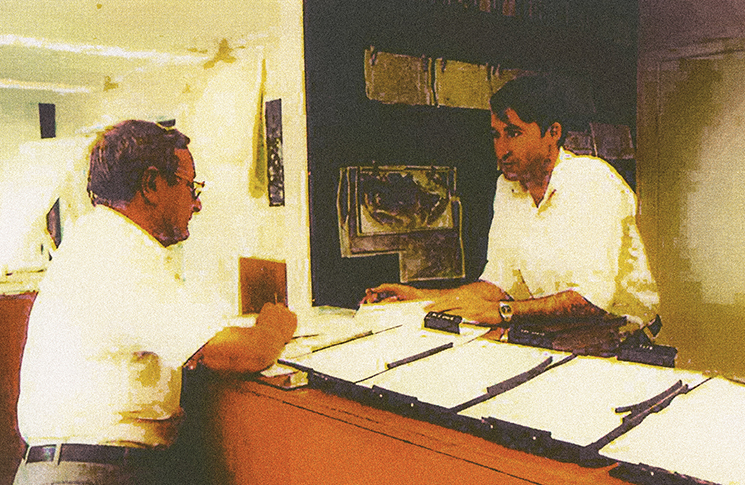As George Bernard Shaw once said, ‘The single biggest problem with communication is the illusion that it has taken place.’
We all think communication is easy—after all, it’s what we do all the time. But everyday communication is not as simple as it may seem. Regardless of whether you are a single-pilot operation or fly for a large organisation, effective communication is a critical part of your flying operations.
Aviate, navigate, communicate—it’s an old adage but true, ingrained into all pilots’ brains. Pilots need to be able to communicate effectively on the ground and in the air with a variety of people, including other pilots, passengers, refuellers, maintenance engineers and air traffic controllers.
Communication misunderstandings cost time and money and at worst, compromise safety. Dr Dominque Estival, a Western Sydney University linguist, pilot and flight instructor, cites miscommunication as contributing to the deaths of more than 2000 people in aircraft accidents since the mid-1970s. She urges native English speakers to adjust their communication in the aviation context to reduce the risk of misunderstanding by pilots who have English as their second language. ‘The principle of being concise, precise and clear, and speaking slowly enough that you can be understood, should always prevail.’
Misheard communications played a major part in a significant incident at Sydney Airport on the night of 29 January 1972 when a fully-loaded Trans Australia Airlines Boeing 727, cleared for take-off, scraped the tail of a Canadian Pacific Airlines DC-8 which was backtracking on the runway after landing. The ATC told the Canadian Pacific crew to ‘… take taxiway right—call on 121.7’ and this instruction was acknowledged. The crew of the Canadian aircraft, however, told an inquiry that they heard the words ‘… backtrack if you like—change to 121.7’. Despite significant damage to the 727’s undercarriage, the crew managed to return safely to Sydney. Flight Safety Australia looked at this incident in 2018 in the article A bump in the night.
Clear communication can be the difference between safe flight and aircraft accidents. Graham Edkins, chief executive, Leading Edge Safety Systems says, ‘Communication is an often-cited issue in aviation accidents where it’s not enough communication or misunderstanding of certain terms or phraseology.’
Misunderstanding phraseology was one of the primary causes of the worst aviation accident in history when two Boeing 747s collided at Tenerife’s Airport in the Spanish Canary Islands, killing 583 people. Non-standard phraseology was used and led to confusion with one aircraft taking off without clearance colliding with the other 747 still on the runway.
Todd Mickleson, senior safety consultant at Leading Edge Safety Systems says, ‘Don’t be afraid to speak up if you see anything odd. You’ve got to create the right environment for people to actually speak up and pass on that information. It’s about opening up that communication and allowing people to give you the information that you need.’
Communication is the fourth booklet in the revised Safety behaviours: human factors for pilots’ kit. The booklet covers topics such as being a good listener; using clear verbal, visual and written language; what happens when communication fails in flight and provides plenty of ways for you to improve your communication skills.
Safety behaviours: human factors for pilots’ kit is out now for free on the CASA website, or can be ordered in print and on USB from the CASA Online Store.





This is a favourite of mine. For some reason pilots at my local airfield have started talking in the third party rather than the first tense. Example “xyz turns left” rather than the usual “xyz turning left”. This might seem a bit petty but what if you are actually talking about a third party. Anyhow, I found radio comms to be the most difficult part of my flight training. You have to know what you are doing to know what you are saying right?
It’s all good & well rambling on about the obvious here which all this really is it will never be a perfect science communicating especially in the aviation world. With busy airport environments where ATC don’t have the luxury of communicating slowly enough that the pilot can absorb the info or repeating it even slower if requested as such along with the many SOP’s that are demanded of flight crew when being pushed due commercial pressure with the fear of missing something. The so called “just culture” (a feel good phrase the Airlines want their pilots to feel comfy with yet which is the exact opposite!) is forever on a pilots mind, we better not F**k this up! Humans will ALWAYS make mistakes especially in the high pressure world of commercial aviation, to avoid this we would have to stay in bed & never start another plane again!
The answer? There isn’t one, just don’t let it be you that F***ks it up!
Some pilots seem to think that they are very professional by making radio calls very quickly and indistinctly, consequently being almost unreadable and extremely dangerous. I prefer to make a slower and distinct call as after all I am trying to let other pilots know exactly where I am and what my intentions are – this is for my safety sake as well as other pilots. I often have a problem around the Ballarat and Western District area understanding radio calls. I think the English language requirements MUST be tightened as there will be an accident in that area.